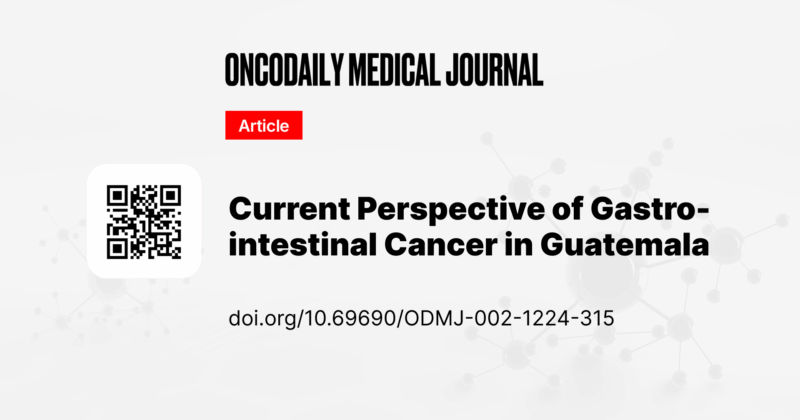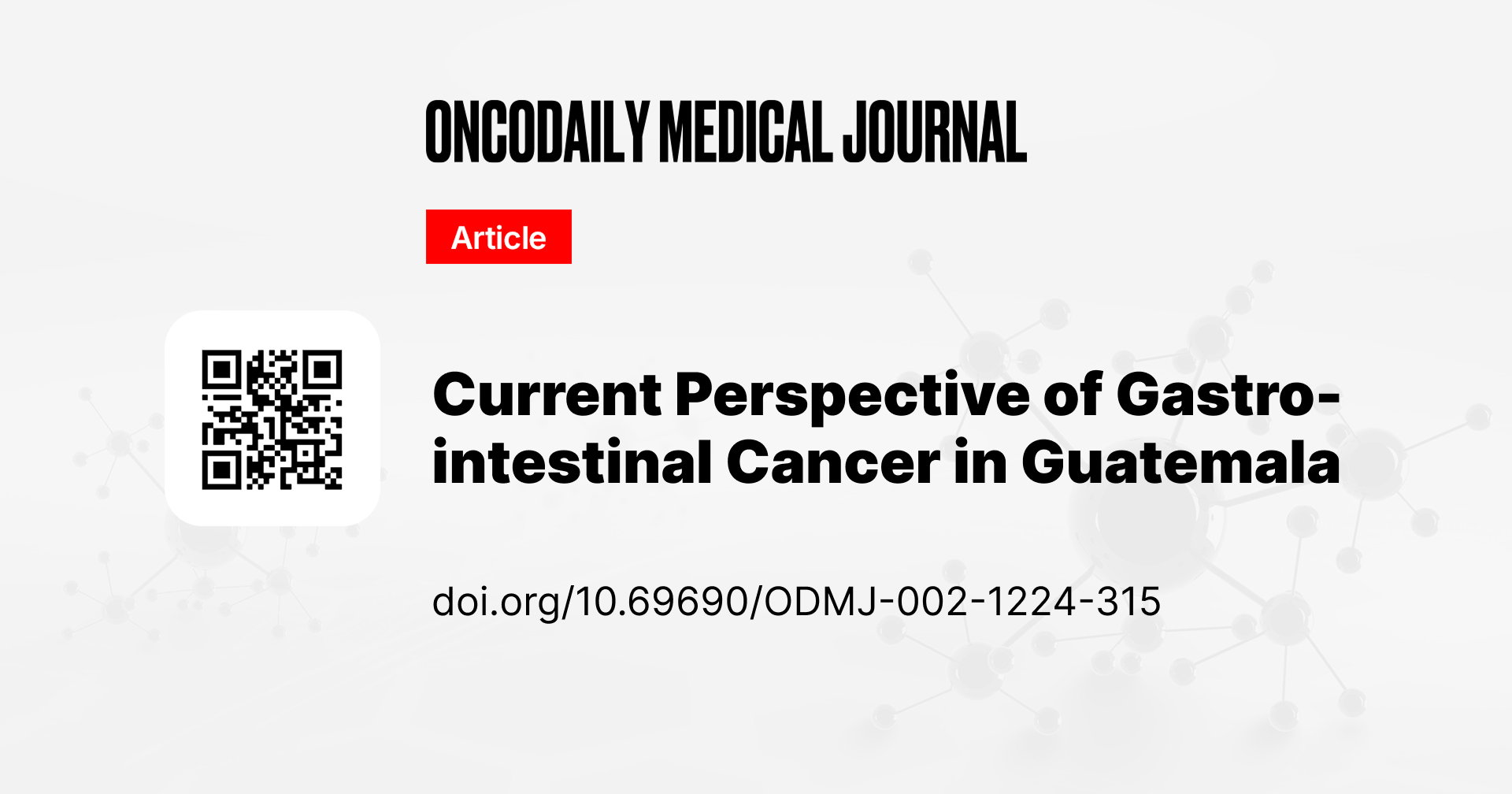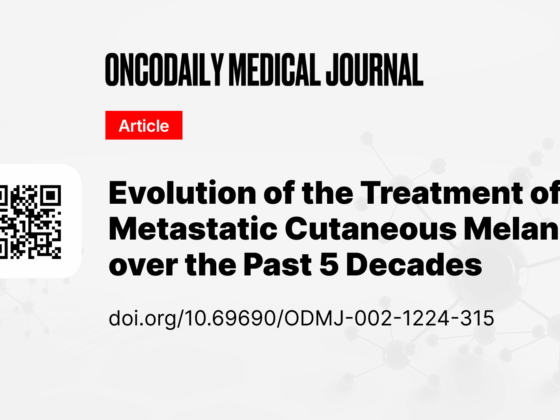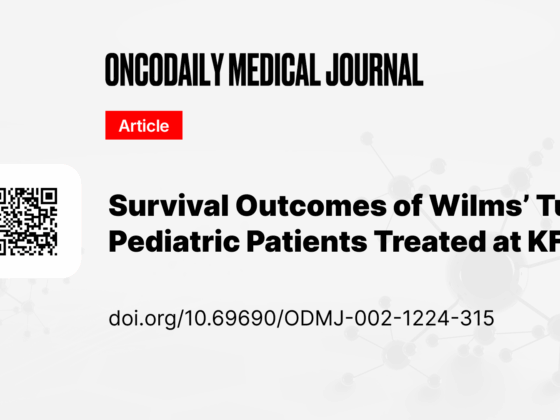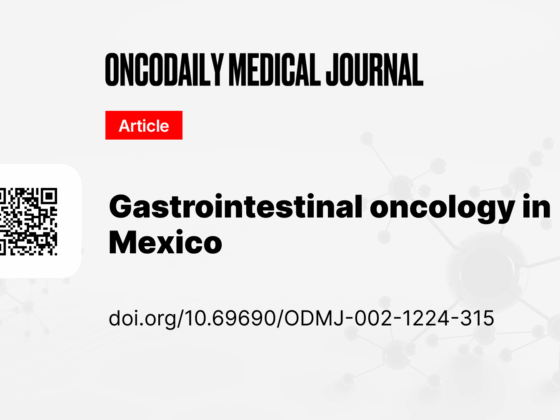In this article, we summarise a paper by Rixci Augusto Ramírez Fallas et al., published in the OncoDaily Medical Journal, offering a system-level view of gastrointestinal (GI) cancers in Guatemala, epidemiology, risk factors, care capacity, and priorities for prevention and early detection.
Title: Current Perspective of Gastrointestinal Cancer in Guatemala
Authors: Rixci Augusto Ramírez Fallas et al.
DOI: 10.69690/ODMJ-002-0701-4309
Full article
GI cancers account for a substantial share of cancer morbidity and mortality in Guatemala, with disproportionate impact in rural and low-income communities. The authors highlight liver and gastric cancer as the leading killers (2022 mortality share: liver 44%, stomach 34%; colon 12%; pancreas 7%; oesophagus 3%), mirroring high exposure to hepatitis B/C, aflatoxins (from poorly stored maize/beans), alcohol, tobacco, biomass wood-smoke, and a striking Helicobacter pylori prevalence of ~65%. Late presentation is common, reflecting uneven access to diagnostics such as endoscopy, imaging, AFP testing, and pathology.
Care is anchored by IGSS (Guatemalan Social Security Institute) and INCAN (National Cancer Institute). IGSS covers ~18% of the population via a national network, with oncology concentrated in an Outpatient Disease Unit (~7,000 patients/year; ~130/day). Roughly 40% of patients are on active therapy (chemotherapy, radiotherapy, targeted agents) and 60% in structured follow-up. A new Modular Unit (since 2022, Zone 11, Guatemala City) adds beds, infusion capacity, and a multidisciplinary team. Activity rebounded post-COVID closures: from 46k to 54k annual oncology visits (2019–2024; +17%), and +24% new diagnoses (2021–2024), approaching pre-pandemic detection.
Disease-specific snapshots reinforce structural gaps:
- Liver cancer: high HBV/HCV burden, aflatoxin exposure, and alcohol use; surgery, TACE, and transplantation are centralized and costly.
- Gastric cancer: concentrated in rural/indigenous populations; H. pylori, salted/smoked foods, and wood-smoke drive risk; endoscopy capacity limits early diagnosis.
- Colon cancer: rising with aging and lifestyle change; limited FOBT/colonoscopy screening outside urban hubs.
- Pancreatic and oesophageal cancers: typically diagnosed late; advanced imaging/endoscopy access is uneven, so treatment is often palliative.
What would move the needle? The authors prioritise:
- Primary prevention: universal HBV vaccination, alcohol/tobacco control, safer grain storage to curb aflatoxins, clean-cookstove programs to reduce wood-smoke.
H. pylori test-and-treat and nutrition education in high-risk regions.
Early detection pathways: pragmatic FOBT→colonoscopy algorithms; triage endoscopy for alarm symptoms.
Capacity building: expand endoscopy/radiology/pathology, radiotherapy units, and workforce; scale multidisciplinary cancer units beyond the capital; sustain data systems to track incidence and outcomes. - Financial protection: continued restoration/expansion of oncology services within IGSS and strengthened referral to INCAN to reduce late diagnosis.
Bottom line: Guatemala’s GI-cancer burden is driven by preventable exposures and late presentation. Targeted prevention, earlier diagnosis, and expanded specialist capacity, especially beyond Guatemala City, are the fastest routes to improve survival and equity.

